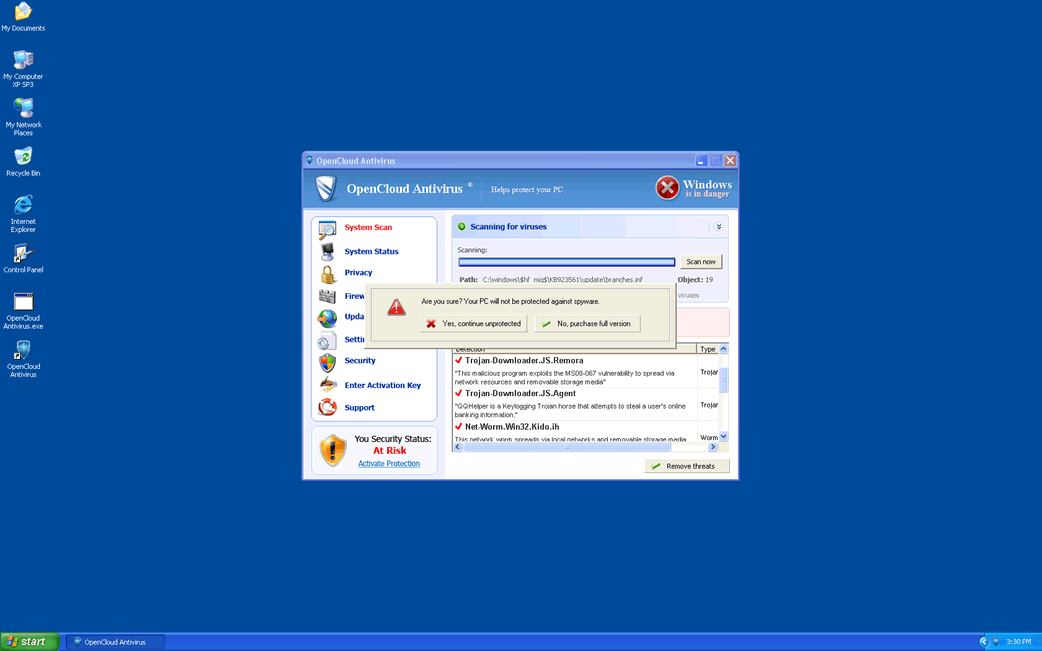Veza Ransomware
Veza is ransomware discovered during investigations into potential malware threats. Researchers found that Veza has the capability to encrypt a wide range of file types and modify their original filenames by adding the '.veza' extension. Following encryption, the ransomware drops a text file named '_README.txt' as a ransom note for the victims. As an example of its operations, Veza alters filenames by appending '.veza' to them, such as changing '1.png' to '1.png.veza' and '2.pdf' to '2.pdf.veza'.
It matters to highlight that the Veza Ransomware is linked to the STOP/Djvu malware family. Experts caution that strains from this group are frequently deployed by cybercriminals along with other malware threats like the RedLine and Vidar infostealers.
Veza Ransomware's Threatening Capabilities Lock Victims' Data
The ransom note associated with the bVeza Ransomware assures victims that all their files, including pictures, databases, and documents, have been securely encrypted using strong encryption methods. To recover access to these files, victims are required to purchase a decryption tool and a corresponding decryption key. The ransom amount demanded for these tools is set at $980, but a discounted rate of $490 is offered if the victim contacts the attackers within 72 hours.
Instructions within the ransom note direct victims to communicate via email with either 'support@freshingmail.top' or 'datarestorehelpyou@airmail.cc'. Victims are warned that files will not be restored without payment. Furthermore, the ransom note suggests that victims can send one encrypted file to the attacker, which will then be decrypted and returned to them. However, this file should not contain any sensitive or valuable information.
The STOP/Djvu Ransomware operates by executing multi-stage shellcodes to commence its encryption activities. It employs looping mechanisms to prolong its runtime, making it a challenge for security tools to detect. Additionally, the malware uses dynamic API resolution techniques to access essential system utilities discreetly and utilizes process hollowing to mask its true intentions.
In ransomware attacks, victims lose access to their files due to encryption and are subsequently demanded payment for decryption. During this process, files are often renamed, and victims receive detailed instructions through a ransom note outlining contact and payment information. Decrypting files without the attackers' assistance is typically impractical. However, succumbing to the demands of cybercriminals is discouraged as it supports criminal activities. Moreover, victims have no guarantees that all affected data will be successfully recovered even if they comply with the demands.
Comprehensive Guide to Safeguarding Your Devices and Data from Ransomware
To protect your devices and data from ransomware infections, consider implementing the following proactive measures and security practices:
- Install Reliable Anti-malware Software: Ensure your devices are equipped with reputable anti-malware software. Keep these programs updated to detect and block ransomware threats effectively.
- Enable and Configure Firewalls: Activate firewalls on your devices and network routers. Firewalls observe and control incoming and outgoing traffic, preventing unauthorized access and potential ransomware attacks.
- Keep Software Updated: Your operating system, software applications, and plugins should be updated with the latest security patches. Updates close vulnerabilities that ransomware might exploit.
- Exercise Caution with Emails: Be cautious when interacting with email attachments or clicking on links from unknown or suspicious sources. Ransomware often spreads through phishing emails containing malicious content.
- Regularly Backup Important Data: Consistently back up your critical data to an external hard drive, cloud storage, or a secure backup service. Having up-to-date backups allows you to recover your files without paying the demanded ransom in the event of an attack.
- Implement Least Privilege Access: Restrict user privileges on networks and devices to minimize the impact of ransomware attacks. Users should be able to access only to the resources necessary for their roles.
- Use Content Filtering and Email Security SolutionsL Employ content filtering and email security solutions to block potentially malicious content and suspicious emails before they reach users' inboxes.
- Enable Pop-up Blockers: Configure web browsers to block pop-ups, which are often used to distribute malicious content, including ransomware.
- Stay Informed and Vigilant: Keep up to date on the latest ransomware trends, techniques, and vulnerabilities. Regularly check for security advisories from trusted sources and apply recommended security measures promptly.
By following these practices and maintaining a driven approach to cybersecurity, you can avoid falling victim to ransomware attacks and protect your devices and data effectively.
Victims of the Veza Ransomware are left with the following ransom note:
'ATTENTION!
Don't worry, you can return all your files!
All your files like pictures, databases, documents and other important are encrypted with strongest encryption and unique key.
The only method of recovering files is to purchase decrypt tool and unique key for you.
This software will decrypt all your encrypted files.
What guarantees you have?
You can send one of your encrypted file from your PC and we decrypt it for free.
But we can decrypt only 1 file for free. File must not contain valuable information.
Do not ask assistants from youtube and recovery data sites for help in recovering your data.
They can use your free decryption quota and scam you.
Our contact is emails in this text document only.
You can get and look video overview decrypt tool:Price of private key and decrypt software is $980.
Discount 50% available if you contact us first 72 hours, that's price for you is $490.
Please note that you'll never restore your data without payment.
Check your e-mail "Spam" or "Junk" folder if you don't get answer more than 6 hours.To get this software you need write on our e-mail:
support@freshingmail.topReserve e-mail address to contact us:
datarestorehelpyou@airmail.ccYour personal ID:'

